Who makes video game consoles?
It’s typically the heaviest hitters in the industry, like Nintendo and Sega, or major electronics manufacturers, like Sony and NEC. In the early days it was Magnavox, Atari, and major toy companies Mattel and Coleco. Sure, there will be a lesser-known scrapper in there once in a while, like SNK, but their products typically cater to a more hardcore niche.
But remember, once upon a time back in the early 1980s, Nintendo wasn’t a console juggernaut — they just made and licensed arcade games. They were known for Donkey Kong and Popeye, which they licensed out to companies like Coleco and Parker Brothers to get them on the Atari 2600 or Intellivision. Nobody expected them to suddenly enter the market with their own home console. Same with Sega — I recall thinking, What? The company that made Zaxxon and Congo Bongo has their own systems??
With this in mind over the years, I’ve often wondered what it would be like if some of my other favorite software or electronic companies would throw their hats into the ring and produce new video game hardware. What would happen if, say, Capcom made a game console? Or Konami? Or Hitachi? Turns out, many of those companies not only asked the same question, but actually had plans of their own home video game platforms having reached various stages of completion. Some of them even actually made it to market, and I hadn’t even been aware of them until recently!
So what happens when some of the biggest names in the games and electronics business start kicking around the idea of introducing a new video game console?
I apologize in advance for the fact that almost all the photos in this article have been swiped from other online sources; ,it was sorta necessary when there’s no way I can afford to add these grails to my own collection…yet!
Taito Wowow
One of the more well-known cancelled video game consoles, the Wowow was a joint effort by longtime games stalwart Taito, the Wowow satellite television broadcasting station, and ASCII.
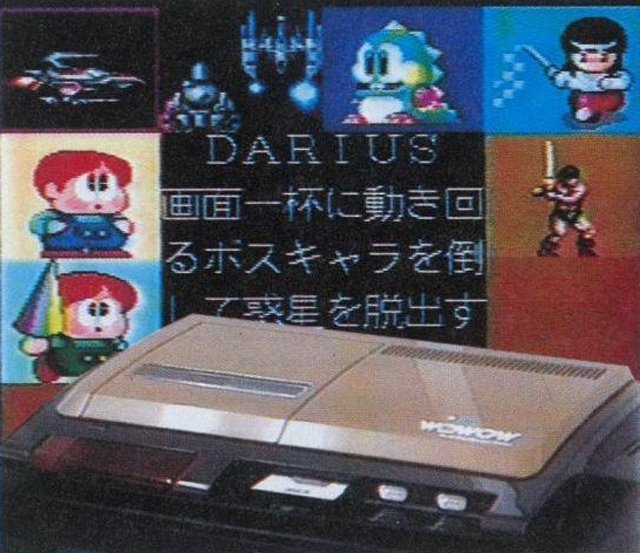
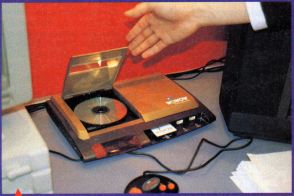
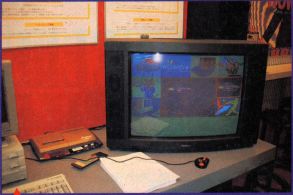
At first glance, the Wowow is a disc-based console that looks a little like a TurboDuo and a Fairchild Channel F had a kid, and would have played versions of Taito hits like Darius and Bubble Bobble. But the plan was for the console to also utilize the Wowow satellite network, probably for the delivery of games, somewhat akin (but a precursor) to Nintendo’s Satellaview add-on for the Super Famicom. Unfortunately, it only got to the prototype stage, as the satellite data transfer rate was too slow and unreliable to make this console feasible. The few photos of the Wowow console you see here have been circulating around the internet forever, and as far as I’m aware, that’s all the visual evidence we have of it right now.
For more information directly from the project manager for the Wowow, check out this article on Unseen 64.
Konami handheld
Konami was unstoppable in the 80s and 90s, famous for franchises like Contra, Castlevania, Gradius, Metal Gear, and about a million others.

So it would stand to reason that a company with that much clout might take a stab at developing a platform of their own. According to J. Sczepaniak in his book The Untold History of Japanese Game Developers, Konami was indeed kicking around the notion of a console in the mid 1990s, actually in the form of a handheld. In fact, Konami’s classic RPG Suikoden was allegedly originally intended to be released on this system, but when the plan fizzled out, development of the game was shifted over to the PlayStation. No hard specs, sketches, photos, or any other documentation seems to have ever been leaked for this piece of hardware, just stories of it having at least been an actual concept and some games being in development for it. How far off the ground it actually got, we can’t be sure; but according to this research source, it was intended to have 3D capability, which we would not actually see in a handheld until the Nintendo DS and Sony PSP, ten years later. Sczepaniak’s original interview with two Konami staffers who speak briefly about the abandoned console can be found here.
Hitachi Hi-Saturn Navi
Hitachi has always been one of my favorite electronics brands, as I pretty much always bought their TVs and VCRs back in the day and found them trustworthy. Hitachi also supplied some components for the Sega Saturn console, as did JVC. As such, both JVC and Hitachi were allowed to produce their own versions of the Saturn console, much as JVC had done a generation earlier with the WonderMega/X’Eye. While Hitachi put out a version known as the Hi-Saturn that had little to no difference from the original Sega model, they also produced a version called the Hi-Saturn Navi, which is a whole different animal.
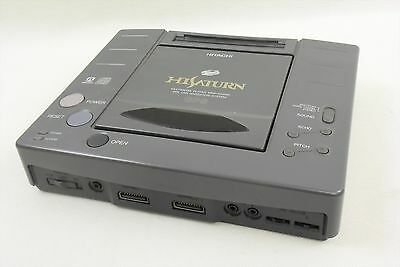
Yes, the Navi played your Saturn games, but on top of that, it sported an entirely new industrial design (which to me looks like it means serious business), including a fold-down LCD screen that inserted into the RAM cartridge slot, and featured a car charging adapter and GPS capabilities, which meant that not only could you play Saturn games in your vehicle, but it could help you navigate as well – hence the “Navi.”
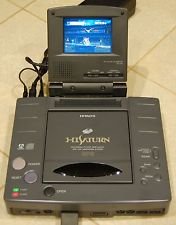
These days, a Hitachi Hi-Saturn Navi will set you back about $2500 on the collector’s market. A desirable piece of equipment to be sure, but perhaps a bit much to play Panzer Dragoon in your car.
Capcom CPS Changer
This is the console that blew my mind when I first learned about it. Basically, in the early 1990s, it would seem that Capcom saw what SNK was doing by bringing arcade games home with the Neo Geo and said, “Oh yeah? Hold my beer,” and basically just put out a goddamn Supergun.
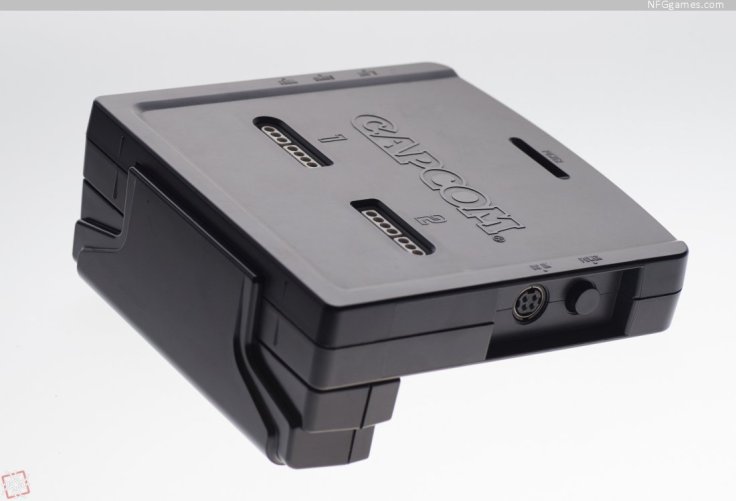
The CPS Changer was an unusually-configured console which really was basically a JAMMA connector with composite and S-video output, and two Super Famicom-compatible controller ports. The main unit was small, because the game software “cartridges” were pretty much Capcom CPS-1 arcade PCBs housed in proprietary plastic shells.

Capcom released 11 of their arcade titles on the CPS Changer format, including Knights of the Round, Final Fight, and three of the Street Fighter games, the last of which is the most interesting as it was a version of Street Fighter Alpha — a CPS-2 game in the arcade, which was ported to run on CPS-1 hardware. Although the CPS Changer was physically designed to prevent the use of other JAMMA boards with it, apparently it was still possible to do so.
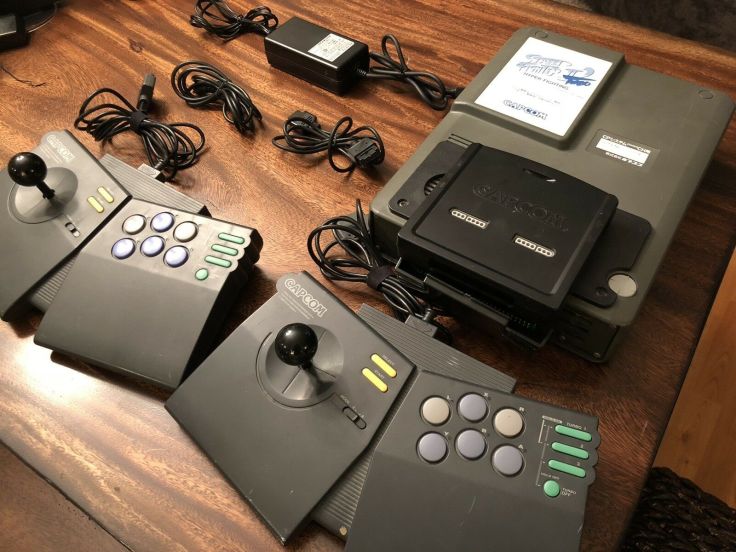
The other thing I find most interesting about this console is that Capcom actually released their Power Fighter Stick, an arcade-style joystick with the standard Street Fighter 6-button configuration, with the CPS Changer in mind. One joystick was included with the console package. But if you were around in the 16-bit days, you’ll remember that this stick actually came out in the US, marketed as simply a Super NES fightstick to help improve your SF2 game.
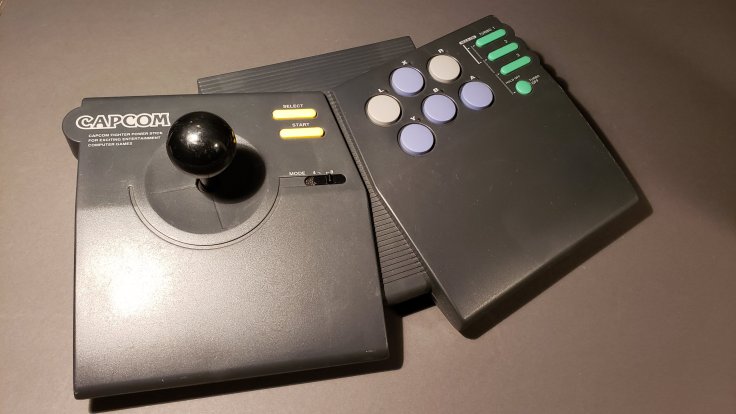
So this joystick is an interesting link to one of the most unusual home game consoles you may never have heard of, and I’ll be writing some more about it in a future post very soon, because it happens to be a pretty great joystick.
. . .
When you think about it, actually, a lot of major electronics, toy, and game companies have taken a shot at the console market since the beginning: the RCA Studio II, the Milton-Bradley Microvision, Casio’s PV-1000 and Loopy systems, Bandai’s Pippin, Playdia, and Wonderswan, the Philips CD-i, Panasonic’s 3DO model and Gamecube Q, the Pioneer LaserActive, the list really goes on.
And who knows which companies might take a stab at it in the future? Google is about to enter the gaming market with their disruptive streaming game platform, Stadia. Maybe LG, TCL, Lenovo, or Samsung will drop a bomb at an E3 or a CES someday. What if a software company like Namco or Platinum announced they were getting into the hardware business? It seems that for every major console that makes a huge impact, there are a handful of obscure systems that don’t even make a dent…and yet sometimes, those are the most interesting, aren’t they?

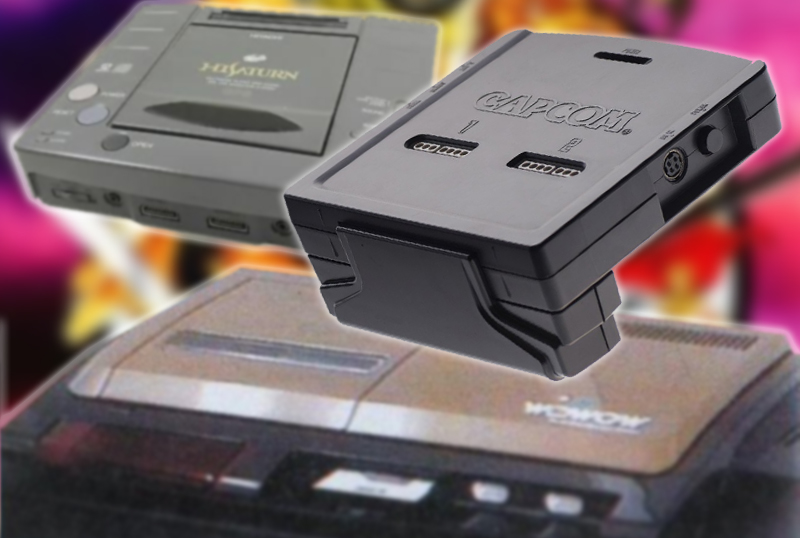
Leave a comment